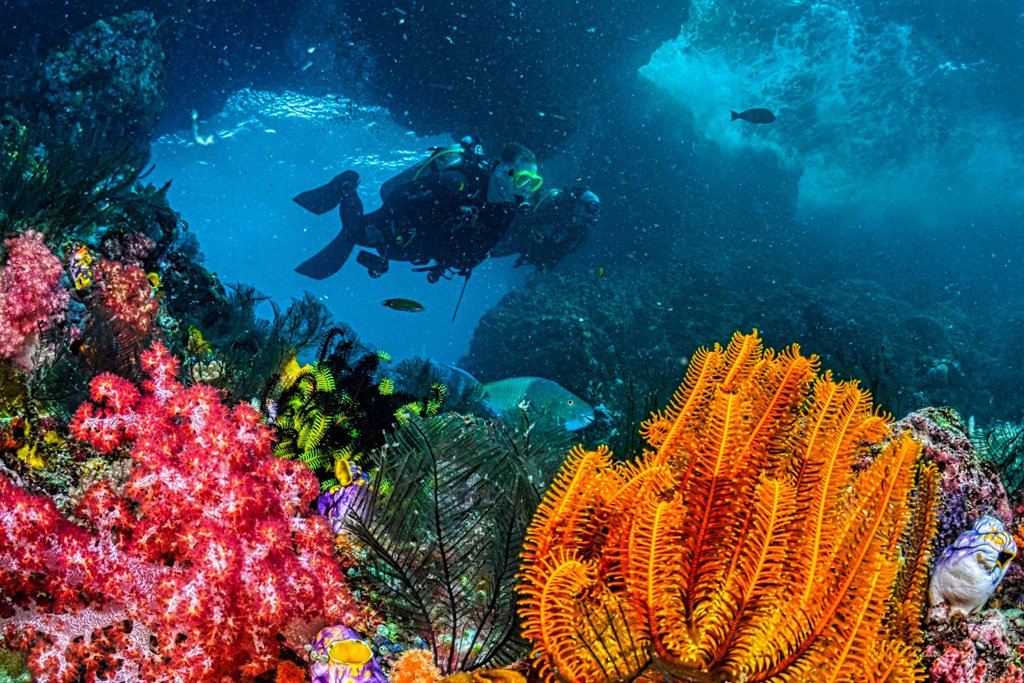

A Colorful City of Life Beneath the Surface
Coral reefs are among the most diverse ecosystems on Earth. They are formed by tiny animals – coral polyps (Anthozoa) – which build massive structures with their calcareous skeletons. These structures provide shelter and food for thousands of species of fish, mollusks, and other marine organisms.
Although they cover less than 1% of the ocean floor, they host approximately 25% of all marine species. For this reason, they are often called the “rainforests of the sea.” Coral reefs are very sensitive, however, and are threatened by pollution, ocean warming, and overfishing. Protecting them is essential for maintaining balance in marine ecosystems.
Area:
cover less than 1% of the ocean floor
Biodiversity:
host up to 25% of all marine species
Structure:
calcareous skeletons of coral polyps
Habitat:
tropical and subtropical waters (Indo-Pacific, Caribbean, Red Sea)
Growth:
on average 1–3 cm per year
Living Architects:
corals are animals, not plants.
Symbiosis:
corals live in partnership with zooxanthellae algae, which provide them with energy.
Danger:
under stress, “coral bleaching” occurs – the loss of algae and gradual death of the coral.
Coastal Protection:
reefs protect coastlines from erosion and waves.
Economic Value:
they attract tourists and support fisheries in many countries.


Blue whale
Sperm whale
Giant squid
Killer whale
Giant oceanic manta ray
Great white shark
Great hammerhead
Beluga whale
Narwhal
Common bottlenose dolphin
Tiger shark
Collection of shark jaws and teeth
Seahorse
Flatworm
Jellyfish
Coral Reef